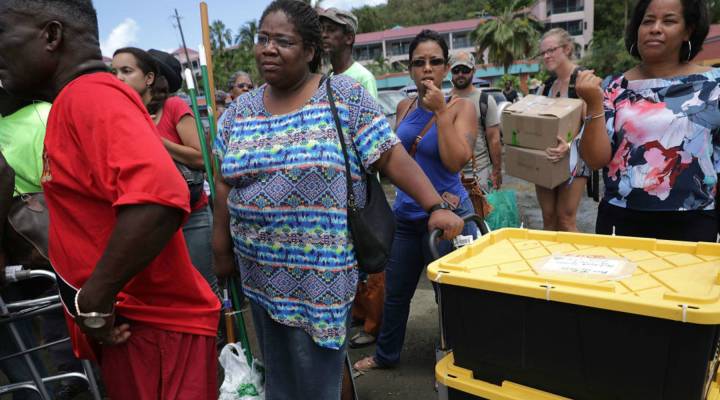
Rebuilding plays a major role in economic recovery of the U.S. Virgin Islands
Rebuilding plays a major role in economic recovery of the U.S. Virgin Islands

2017 was full of natural disasters. They didn’t seem to let up — fires in California, floods in Texas, hurricane after hurricane in the Caribbean and on the Gulf Coast. The media moved on quickly, but recovery efforts are long from over. We talked to local officials in five American cities and territories about their hopes and objectives in the coming year. Check out the rest of our series here.
The U.S. Virgin Islands were hit with two Category 5 hurricanes in 12 days. First, Hurricane Irma slammed two of the three main islands, St. Thomas and St. John. The islands were pulling themselves together, clearing debris and even restoring power, when Hurricane Maria swept through them again and hit the third main island, St. Croix.
“We literally had to start all over again,” said U.S. Virgin Islands Gov. Kenneth Mapp. About two months after the disasters, Mapp talked to Marketplace about the importance of rebuilding and the work left to repair the power grid, schools, hospitals and more.
Kenneth Mapp: Good morning.
Kimberly Adams: Two Category 5 hurricanes in 12 days. What was the immediate impact on the islands and their economy?
Mapp: Well, the first 12 days we were trying to respond, we were dealing with life issues, rescuing people. Royal Caribbean Cruise Lines and Norwegian Cruise Lines in the immediacy were really very helpful in getting folks out. And we were responding to the needs of folks particularly in St. Thomas and John, people that lost roofs, people that needed to get to shelters. So we were really recovering, clearing roads, and we had even started some power restoration on St. Thomas, St. John. And then of course, 12 days later, Maria came to the south of the Virgin Islands where St. Croix is at. We literally had to star t all over again.
Adams: So how is the recovery going so far?
Mapp: Well, it’s going well. We’re back and open for business. We have cruise ships. The airlines are increasing their flights back. The main and secondary roads are pretty much clear. Schools are open. We have still medevacked our patients because our hospitals are severely damaged, so we have patients on four states on the U.S. mainland. Power restoration is still moving. The drivers for our economy is really going to be reconstruction, as the insurance claims are paid, as businesses start reconstructing, as homes start reconstructing. And then, of course, much of the federal assistance that goes to individuals and that will go to the government, all of those will drive the economy, creating jobs and getting people back out to work.
Adams: Gov. Mapp, how long do you think this recovery will take?
Mapp: Well, from beginning to when we say we’ve put the last nail in the last building, you can expect maybe four to five years. I try to give people reference points. Louisiana is a lot bigger. Katrina hit a lot more land. It’s 12 years out, and Louisiana is still under recovery. Hurricane Sandy is six years out, and folks are still, the federal government is still, spending money to repairs in places in New York and New Jersey and Long Island affected by Sandy. It’s just disasters require long-term recovery, because particularly in our case, we are talking about a lot of mitigation and resilience in terms of the power system. We get a bit of it under ground. We’re going to build smaller hospitals and harden them and make them smarter. We don’t need 250-bed hospitals; we’re going to 100-125 on each island. We lost nine schools; we’re going to rebuild six of them. This is just going to be a long process, and we try to manage that expectation. But you know, it gets better, each month gets better, and it just provides tremendous dollars in the economy and it provides jobs. And so we just have to do what’s required.
| Timeshare owners are suing the U.S. Virgin Islands over new fee |
| Rebuilding or “building forward”: A post-Harvey Houston |
| How hurricane recovery makes the economy seem better |
There’s a lot happening in the world. Through it all, Marketplace is here for you.
You rely on Marketplace to break down the world’s events and tell you how it affects you in a fact-based, approachable way. We rely on your financial support to keep making that possible.
Your donation today powers the independent journalism that you rely on. For just $5/month, you can help sustain Marketplace so we can keep reporting on the things that matter to you.


















